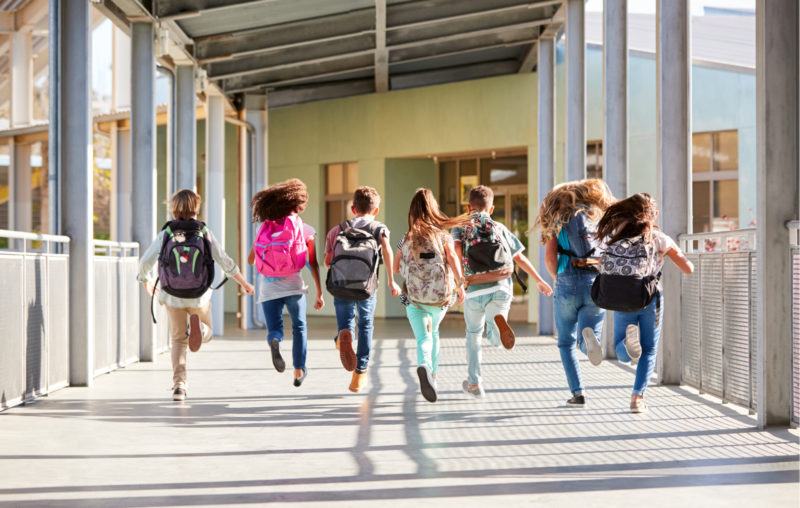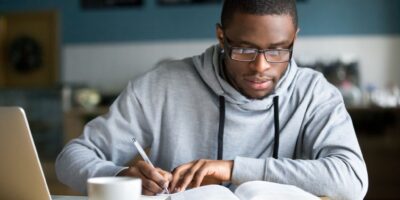Don’t Close the Schools but Protect Teachers and Staff

With the school year inching closer and closer, concerns about how the education system should react to COVID-19 are at an all-time high. On the question of whether children should return to schools, the consequences of a blanket cancellation of in-person classes will bring a series of negative consequences that will likely outweigh the benefits.
In a previous article, I explain these tradeoffs to some degree of detail. To summarize the points briefly, school closures will result in a series of negative tradeoffs that will likely render the policy counterproductive.
My rationale for this can be attributed to the fact that
- -School closures are not a tool to prevent infections, only to delay outbreaks to save hospital capacity
- -COVID-19, unlike influenza, affects children less than adults. There is no evidence to suggest children are important in transmitting the disease
- -Teachers are not prepared to provide an adequate remote educational experience
- -Children will likely be safer in school than out of school, especially in communities where they might be exposed to substance abuse, domestic violence, gang activity etc.
- -School closures will exacerbate the existing economic downturn
- -School closures will impose child care burdens on healthcare workers, leading to an increase in mortality rates
As a result, a blanket policy of remote learning or even the initiative of individual schools choosing to close cannot be viewed to a reliable degree of certainty as effective at this time. If anything, they will be counterproductive and futile because of the tradeoffs outlined above. Therefore, the case for school closures on the grounds that they will protect children and families from infection is highly questionable.
Responding To Concerns for Protecting Teachers and Staff
A more compelling case for school closure measures would be protecting older teachers and staff from infection. The mortality rate for COVID-19 amongst young people is virtually nonexistent but older individuals are at a higher risk. Although that mortality rate is still low compared to other diseases, these concerns should not be swept under the rug.
The Solution
As outlined above a sweeping school closure mandate will be as counterproductive as it is misinformed. The drawbacks will far outweigh the alleged benefits and potentially put teachers and staff in even more dangerous positions. Instead, the best policy would be to keep schools open while taking the necessary precautions to protect the most vulnerable.
During a pandemic or any sort of crisis, it is wise to be nimble, innovative, and attentive, not pigeonholed in extreme dictates. Agency should be given to communities and individual schools to decide what’s best for the unique needs of their staff. A top-down mandate, whether it’s complete school closure or an attempt at less restrictive universal policies, will never be as comprehensive as decisions made by individual schools.
Build Policies Around a Return to School Model
In guidance published by the American Academy of Pediatrics on COVID-19 and school re-entry, they state
“The AAP strongly advocates that all policy considerations for the coming school year should start with a goal of having students physically present in school.”
This should be the guiding principle when it comes to planning a successful school year. School closures and lockdown measures should be considered a last resort if at all. Not only are they incredibly disruptive but it is questionable if they are worth the tradeoffs or provide the benefits that they advertise. Schools should implement policies starting from a position of complete normality and make necessary restrictions based on justified needs. Starting from a position of complete closure will not only be an inappropriate position to create sound policy but also would be highly misinformed.
Phil Magness explains in one of his recent articles that epidemiologic modeling has been highly suspect in predicting the effects of lockdown measures for both closures and reopening. Not only is there still a robust debate on how COVID-19 moves throughout society, but the predictions given by experts have been wildly incorrect as well as responsible for unnecessary hysteria.
Tailor Solutions to Circumstances
All schools are different. There is no one-size-fits-all solution that will allow for an optimal policy response in protecting all parties from students, to families, to teachers and staff. The demographics amongst individual institutions will vary greatly whether it be age, income, race, disability, and so on. Furthermore, some schools will be in areas with greater COVID-19 cases, some with fewer, some with none. No individual school should have to see their policies set by another in a far different set of circumstances.
In 2017 the Rand Corporation convened a large group of stakeholders and experts to discuss a pandemic response for schools. In its report, it stated that
“Some participants commented that certain social distancing practices will be more feasible in some locations than others. They cited rural vs. urban school districts, weather, and socio-demographics of the student population as factors that affect feasibility.”
Decisions made at the local level and not through a central dictate will always be more effective as they are finely attuned to the specific circumstances of the community. Furthermore, schools should have the freedom to enact policies as they see fit without having to encounter the inefficiency and the politics of the larger state bureaucracy.
The AAP guidance as well as the CDC provide a thorough set of suggestions that can minimize the risk of infection for older staff that are at risk of contracting COVID-19 without closing schools. These measures include common-sense precautions such as encouraging hand washing, frequent cleaning, enforcing good food hygiene, and finding ways to insulate the most vulnerable.
The guidance offers more substantial measures to be considered when the risk of infection becomes higher. These include creating cohorts of students which can be more easily managed and accounted for, maintaining distance between teachers and students, considering plexiglass barriers for bus drivers, and rotating teachers while keeping students in the same classroom.
Final Considerations
There is no question that closing schools will bring about tremendous consequences, some of which cannot be adequately measured at this time. The best way forward would be to do the best we can to allow these institutions to stay open while minimizing risks to vulnerable individuals. The AAP clarifies that
“Policy makers should acknowledge that COVID-19 policies are intended to mitigate, not eliminate, risk.”
There is no way to completely shield ourselves from danger and attempts to do so will result in adverse consequences. If an infection with severe symptoms occurs, that person should make use of the appropriate medical avenues. The purpose of pandemic response policies is to reduce the stress on the healthcare system so these services are available, not eliminate the risk of infection.
Such misguided application will only produce more harm than good as seen by the economic and social devastation created by the existing lockdown measures. During a pandemic, life will become a little more difficult and those who believe they can eliminate strife and conquer nature may well take down society in the process.
The recurring theme is tradeoffs. Our response to COVID-19 does not occur in a vacuum. It isn’t a simple dichotomy between going to school or the safety of teachers. There is far more at stake. The AAP writes
“Policies to mitigate the spread of COVID-19 within schools must be balanced with the known harms to children, adolescents, families, and the community by keeping children at home.”
It is clear that complete school closures will be an extreme and devastating policy. What little benefits they provide in marginal decreases in infection will be offset by an incredibly disruptive ripple of unintended consequences. The best course of action would be to utilize common sense and care to implement policies that will minimize the danger of everyone involved when students return to school this fall. These policies must be tailored to individual circumstances, they must be flexible, they must have the interests of all stakeholders in mind, and they are best made when reason, not hysteria prevails.
In Closing
As the great doctor Donald Henderson, most famous for leading the eradication of smallpox, once said
“Experience has shown that communities faced with epidemics or other adverse events respond best and with the least anxiety when the normal social functioning of the community is least disrupted.”
Concerns regarding safety and infection dominate the conversation with COVID-19 on the minds of parents, teachers, and staff. From our collective experience of the past few months, closing schools should be the last option if at all. Lockdown measures have not only failed to perform as advertised but they have devastated countless lives and communities. The economy is in shambles and people desperately want a semblance of their normal lives back. Sweeping draconian policies have not only proved ineffective and clumsy but also fatal.
The AAP states as one of their key principles in their guidance
“School policies should be guided by supporting the overall health and well-being of all children, adolescents, their families, and their communities.”
The AAP also stresses that
“Policies should be practical, feasible, and appropriate for the child and adolescents’ developmental stage.”
Looking after the overall health and development of not only students but the community as a whole means taking into account the tradeoffs that come from imposing or not imposing certain policies, not just obsessing over new cases. While it is clear that society, and children in particular, will be better off if schools remain open, there are still concerns with the safety of staff and teachers.
This issue should not be resolved with school closures. Rather schools should do the best they can to craft tailored responses that will allow them to stay open while ensuring vulnerable individuals are accommodated. Ultimately we must do the best we can to get society back on track to normalcy as the sacrifices that have characterized our response to COVID-19 have far outweighed the benefits.










